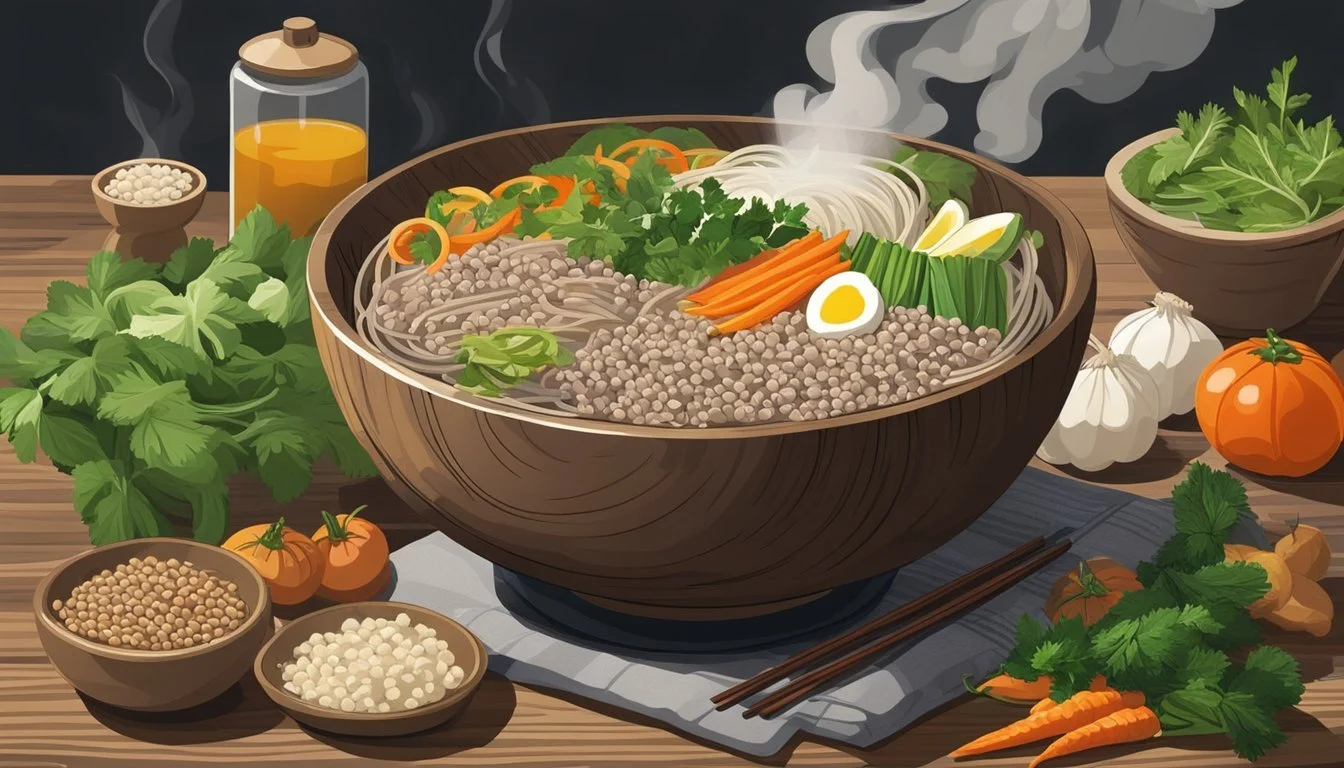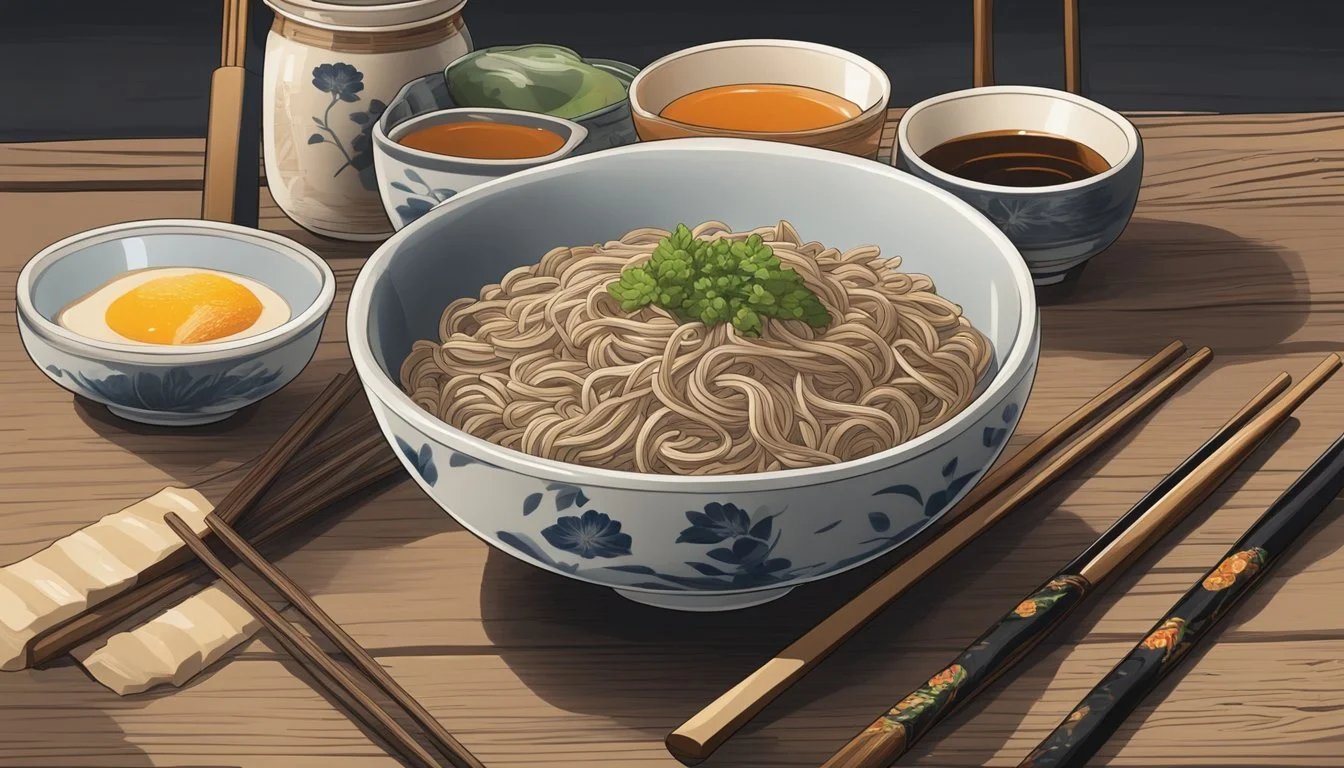How Long Do Buckwheat Noodles Last?
Shelf Life and Storage Tips
Buckwheat noodles, a staple in Asian cuisine, have gained popularity worldwide for their health benefits and distinctive flavor. Known also as soba noodles (how long do soba noodles last?) in Japan, these noodles are primarily made from buckwheat flour (how long does buckwheat flour last?). Storage methods and conditions significantly influence the shelf life and quality of buckwheat noodles, whether they are in dried or fresh form. Dried buckwheat noodles, when kept in a cool, dry place, can last for several months without losing their quality.
Once cooked, buckwheat noodles should be consumed relatively quickly to maintain their texture and taste. The ideal way to enjoy soba noodles includes cooking them al dente and then quickly rinsing under cold water to halt the cooking process and remove excess starch. This method ensures that the noodles retain their firmness and do not become overly soft or gummy.
For those interested in longevity and quality maintenance, understanding proper storage and preparation techniques is key. It is essential for consumers to be informed about the characteristics of buckwheat noodles in order to make the most of this nutritious and versatile food item. Knowing how to store and handle buckwheat noodles can lead to optimum enjoyment and nutritional benefit.
Understanding Buckwheat Noodles
Buckwheat noodles, especially known as soba in Japan, offer a nutritious alternative to traditional pasta, with a rich history and a profile tailored for various dietary needs.
Origins and Varieties
Buckwheat, despite its name, is not related to wheat but is an ancient grain with origins in Asia. It's utilized to make soba noodles, a staple in Japanese cuisine with a characteristic nutty flavor. Varieties of soba vary from 100% buckwheat (gluten-free) to mixes containing wheat flour which affects both texture and dietary content.
Nutritional Profile
Buckwheat noodles are a powerful source of nutrients. They are high in fiber and protein, making them filling and beneficial for digestion and muscle maintenance. Besides, they are rich in minerals such as manganese, iron, and zinc, which are crucial for bone health and immune function. The presence of B vitamins enhances metabolic and nervous system health.
Dietary Considerations
For those seeking gluten-free options, pure buckwheat soba noodles are ideal. They cater to vegan and vegetarian diets due to their plant-based origin and absence of animal products. Moreover, the high fiber and protein content makes soba an excellent choice for those on a health-conscious diet seeking satiety and nutrient density.
Storing Buckwheat Noodles
Appropriate storage of buckwheat noodles is essential for maintaining their quality and extending their shelf life. Uncooked noodles, especially those with a high percentage of buckwheat, need a cool, dry place, while cooked noodles require refrigeration.
Uncooked Buckwheat Noodles
Pantry Storage: Uncooked soba noodles, when stored properly in the pantry, can last several months due to their dry nature. It’s important to keep them in an airtight container or original unopened packaging to protect from moisture and pests. Varieties like juwari soba, made from 100% buckwheat, have a lower shelf life compared to those mixed with wheat flour due to the lack of gluten.
Optimal Conditions: Cool, dark, and dry environment
Shelf Life: Typically up to six months
Cooked Buckwheat Noodles
Refrigeration: Once cooked, buckwheat noodles should be stored in the refrigerator within two hours of cooking to prevent bacteria growth. Leftovers should be placed in airtight containers. They may become more brittle upon cooling, particularly fresh soba varieties, so gentle heating is recommended when consuming leftovers.
Temperature: Store at 40°F (4°C) or below
Shelf Life: 3-5 days in the refrigerator
Preparation Techniques
The mastery of cooking buckwheat noodles lies in adhering to precise timings and specific ingredient combinations. The uniqueness of buckwheat flour ensures that the noodles have a distinguished nutty flavor, which can be enhanced with an array of complementary seasonings and techniques.
Cooking Buckwheat Noodles
To cook buckwheat noodles, also known as soba, one must bring a large pot of boiling water to a brisk boil. Unlike other pasta, soba noodles require careful attention to the cooking time, which is typically between 5 to 8 minutes. A reliable method is to follow the package directions closely to avoid overcooking, which can render the noodles too soft. After cooking, it is essential to drain the noodles in a strainer and then rinse them with cold water to halt the cooking process and rid the noodles of excess starch.
Recipe Ideas
Soba noodles are versatile and can be incorporated into various dishes.
Noodle Salad: Toss the cooked soba with green onions, a dressing of soy sauce (how long does soy sauce last?), sesame oil, and garnish with sesame seeds (how long do sesame seeds last?) for a refreshing salad.
Stir-Fry: They can serve as an excellent base for a stir-fry, absorbing the flavors of vegetables and sauces while maintaining their firm texture.
Dashi Broth: Soba noodles shine when served simply in a warm dashi broth, allowing the nutty flavor of the buckwheat flour to come through.
Tempura Accompaniment: Pair with tempura for a textural contrast that is highly satisfying.
Beyond classic soba recipes, buckwheat flour can be used to make kasha (how long does kasha last?), pancakes, and even porridge.
Serving Suggestions
Buckwheat noodles, commonly known as soba noodles, offer versatility that can enhance a variety of dishes. Their unique nutty flavor and firm texture make them an excellent base for both cold and hot preparations.
Cold Noodle Dishes
Cold soba noodle dishes present a refreshing option, particularly as a soba noodle salad. They can be served chilled with a dipping sauce like tamari (how long does tamari last?) or mixed with a soy-based dressing for a savory twist. One popular dish is a cold soba noodle salad featuring thinly sliced vegetables, a hint of citrus, and tofu (how long does tofu last?) for added protein. This dish balances texture and flavor, creating a satisfying meal that's both healthful and delicious.
Example Cold Soba Noodle Salad:
Cooked soba noodles, chilled
Julienned carrots and cucumbers
Cubes of tofu
Light dressing with tamari and a splash of rice vinegar
Hot Noodle Soups
In hot preparations, soba noodles shine in soups such as a classic dashi broth-based soup. Their robustness complements broths ranging from simple vegetable soups to more complex offerings like ramen or udon noodle soup. A simple way to enjoy soba noodles hot is in a clear dashi broth with green onions and a sprinkle of sesame seeds. They can also be substituted for traditional udon or ramen noodles (how long do ramen noodles last?) for a healthier twist on these classic soups.
Suggested Hot Soba Noodle Soup:
Soba noodles in a savory dashi broth
Additions like mushrooms, green onions, and seaweed
Optional: A soft-boiled egg or slices of cooked chicken
By incorporating soba noodles into these cold and hot dishes, one can enjoy a harmonious balance of flavors and textures, all the while benefiting from the wholesome attributes of buckwheat.
Health Benefits
Buckwheat noodles offer a range of health benefits, primarily due to their rich nutritional profile. They provide essential nutrients without compromising dietary needs.
Nutritional Advantages
Buckwheat noodles are a healthy alternative to traditional pasta due to their impressive nutrient content. They are high in protein, which is crucial for muscle repair and growth, and fiber, beneficial for digestive health. Notably, they are a source of energy-yielding carbohydrates yet are low on the glycemic index, which may result in a slower rise in blood glucose levels, making them suitable for managing blood sugar.
In terms of micronutrients, buckwheat noodles are a valuable source of various vitamins and minerals, including magnesium, phosphorus, and B-vitamins. This composition supports a variety of bodily functions, ranging from energy production to maintaining bone health. A single serving of buckwheat noodles offers these essential nutrients without excessive calories, aligning well with a balanced diet.
Suitability for Dietary Needs
Buckwheat noodles are inherently gluten-free, as they are made from buckwheat flour, not wheat. This makes them suitable for individuals with celiac disease or those following a gluten-free diet. Moreover, they cater to dairy-free diet preferences, as they don't contain any milk products, making them a versatile ingredient for various dietary restrictions. Their composition also makes them a plant-based source of nourishment that can be advantageous to those seeking to reduce their intake of animal products, offering an approach to diversify protein sources within one's diet.
Culinary Cultural Context
In examining buckwheat noodles' shelf life, it's essential to consider their cultural origins and how these traditions influence their preparation and use. Durable and versatile, buckwheat noodles have been deeply rooted in Japanese and Korean cuisine.
Japanese Cuisine Influence
Soba, the Japanese term for buckwheat noodles, is an integral part of Japanese cuisine. These noodles are typically made from buckwheat flour, giving them distinct flavor and nutritional benefits. It's common practice in Japan to serve soba noodles both hot in broths and cold with dipping sauces. Their preparation often reflects the four seasons, embodying the Japanese culinary emphasis on seasonality.
Global Variations
While soba signifies Japanese buckwheat noodles, the use of buckwheat flour extends globally.
Korean Cuisine: In Korea, buckwheat noodles, known as naengmyeon, often include a mix of buckwheat and sweet potato starch. They're famously served in cold broths or with spicy sauces.
Whole Wheat versus Buckwheat: Unlike whole wheat noodles, buckwheat noodles can be gluten-free if made purely from buckwheat flour, accommodating a wider dietary range.
Groats: Buckwheat groats (how long do buckwheat groats last?), the hulled seeds of the buckwheat plant, can also be incorporated into noodle-making, offering texture and nutritional variance.
These global variations not only adapt to different culinary traditions but also affect the longevity and storage conditions of the noodles, considering factors like preservatives and packaging which may extend or reduce their shelf life.







